
George Villiers, 1st Duke of Buckingham, KG(; 28 August 1592 – 23 August 1628), was an English courtier, statesman, and patron of the arts. He was a favourite of King James I of England. Buckingham remained at the height of royal favour for the first three years of the reign of James's son, King Charles I, until a disgruntled army officer assassinated him.
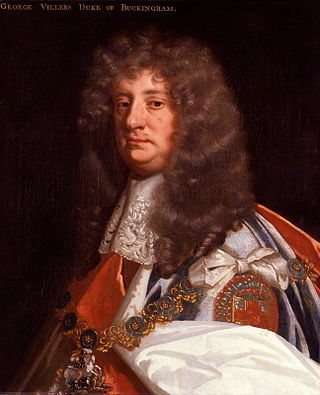
George Villiers, 2nd Duke of Buckingham, 20th Baron de Ros, was an English statesman and poet.

Allan Ramsay was a prominent Scottish portrait-painter.
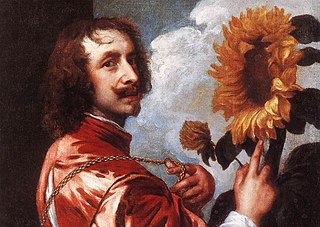
Sir Anthony van Dyck was a Flemish Baroque artist who became the leading court painter in England after success in the Spanish Netherlands and Italy.

Pollok House, formerly the family seat of the Stirling-Maxwell family, is located at Pollok Country Park in Glasgow, Scotland.
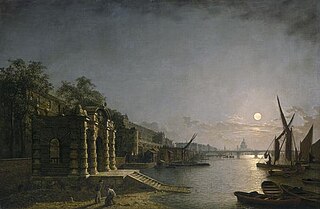
York House was one of a string of mansion houses which formerly stood on the Strand, the principal route from the City of London to the Palace of Westminster.
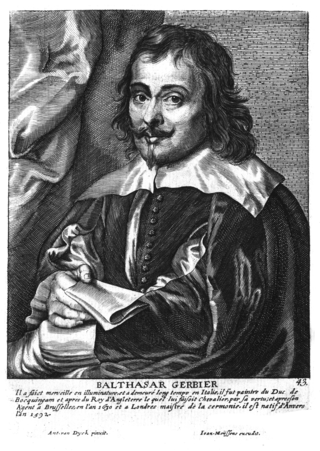
Sir Balthazar Gerbier, was an Anglo-Dutch courtier, diplomat, art advisor, miniaturist and architectural designer, in his own words fluent in "several languages" with "a good hand in writing, skill in sciences as mathematics, architecture, drawing, painting, contriving of scenes, masques, shows and entertainments for great Princes... as likewise for making of engines useful in war."
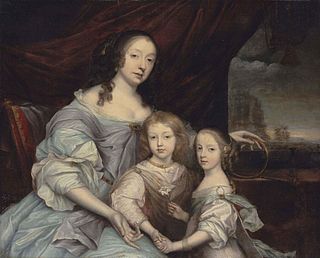
Mary Stewart, Duchess of Richmond and Duchess of Lennox (1622–1685), formerly Lady Mary Villiers, was the daughter of the George Villiers, 1st Duke of Buckingham and Katherine Manners, 19th Baroness de Ros.
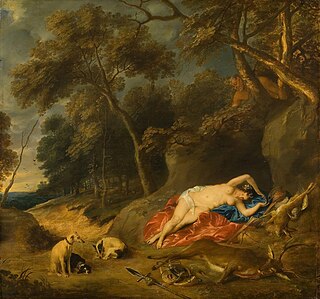
Frans Wouters (1612–1659) was a Flemish Baroque painter who translated the monumental Baroque style of Peter Paul Rubens into the small context of cabinet paintings. He was a court painter to the Roman Emperor and the Prince of Wales and was active as an ambassador and art dealer.

Sir Peter Paul Rubens was a Flemish artist and diplomat from the Duchy of Brabant in the Southern Netherlands. He is considered the most influential artist of the Flemish Baroque tradition. Rubens's highly charged compositions reference erudite aspects of classical and Christian history. His unique and immensely popular Baroque style emphasized movement, colour, and sensuality, which followed the immediate, dramatic artistic style promoted in the Counter-Reformation. Rubens was a painter producing altarpieces, portraits, landscapes, and history paintings of mythological and allegorical subjects. He was also a prolific designer of cartoons for the Flemish tapestry workshops and of frontispieces for the publishers in Antwerp.

Charles I with M. de St Antoine is an oil painting on canvas by the Flemish painter Anthony van Dyck, depicting Charles I on horseback, accompanied by his riding master, Pierre Antoine Bourdon, Seigneur de St Antoine.

The Whitehall group is a term applied to a small circle of art connoisseurs, collectors, and patrons, closely associated with King Charles I, who introduced a taste for the Italian old masters to England. The term usually includes the advisors and agents who facilitated the group's acquisition of works of art.

Bendor Gerard Robert Grosvenor is a British art historian, writer and former art dealer. He is known for discovering a number of important lost artworks by Old Master artists, including Sir Peter Paul Rubens, Claude Lorrain and Peter Brueghel the Younger. As a dealer he specialised in Old Masters, with a particular interest in Anthony van Dyck.

John Weesop or Jan Weesop was a portrait painter presumed to be of Flemish descent who is now only known for his works produced in the 1640s in England. His English patrons were predominantly prominent members of the royalist aristocracy.
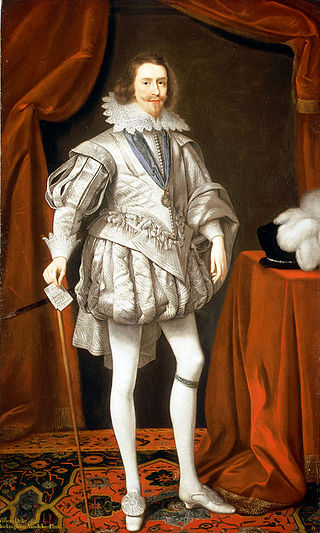
George Villiers, 1st Duke of Buckingham commissioned works of art to enhance his personal image, as a means to aid his political career and advancement at court.

Simon Rollo Gillespie is a British conservator-restorer of fine art, and an art historian. He is known particularly for his work with Early British and Tudor portraits, although his practice extends across all periods from early paintings to contemporary artworks. Gillespie has been restoring art since 1978, and he appears frequently on the BBC Four series Britain's Lost Masterpieces, having previously appeared on the BBC1 art programme Fake or Fortune.
Britain's Lost Masterpieces is a factual BBC Four documentary television series that aims to uncover overlooked art treasures in British public collections, in conjunction with Art UK. It is presented by Bendor Grosvenor, along with art historian Jacky Klein and Emma Dabiri. The series also features the art restoration work of Simon Gillespie. In North American syndication, the series is called The Art Detectives.
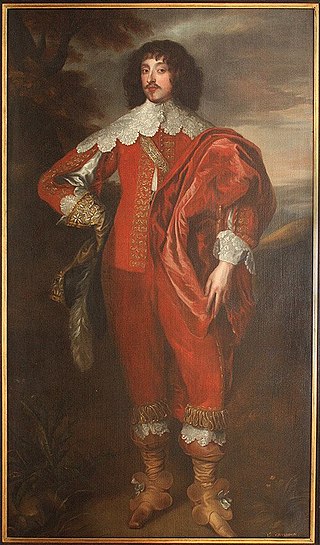
William Villiers, 2nd Viscount Grandison was an Irish peer and Royalist soldier who was fatally wounded during the First English Civil War in 1643.

Portrait of a Lady in White is a painting by Titian, made about 1561, of an unknown gentlewoman dressed in white; it is now in the Gemäldegalerie Alte Meister in Dresden.
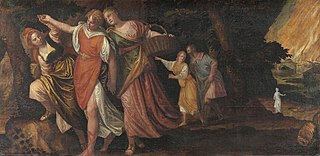
The Duke of Buckingham series is a 1590s cycle of Old and New Testament paintings by Paolo Veronese and his workshop. They were acquired in Venice in 1595 by Charles de Croy, then duke of Aarschot, and moved to his castle at Beaumont. It was acquired early in the 17th century by George Villiers, 1st Duke of Buckingham, hence its title. Most of the series are in the Kunsthistorisches Museum in Vienna, though two are in the National Gallery in Prague and one in the National Gallery of Art in Washington.



















